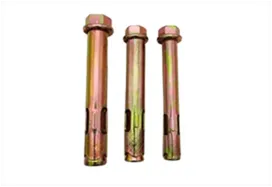Dec . 21, 2024 03:26 Back to list
types of rope clamps
Types of Rope Clamps A Comprehensive Guide
Rope clamps are vital tools used in various applications, ranging from industrial settings to outdoor activities. They serve the essential function of securing rope ends, ensuring stability and safety in a multitude of situations. Understanding the different types of rope clamps can help users choose the right one for their specific needs. Here, we will explore the most common types of rope clamps, their uses, and the advantages they offer.
1. Wire Rope Clamps
Wire rope clamps are specifically designed for wire ropes, which consist of several strands twisted together. These clamps are typically made of forged steel for enhanced strength and durability. A basic wire rope clamp consists of a U-bolt, a saddle, and two nuts. The rope is positioned in the saddle, and the U-bolt is placed over it before tightening the nuts. This design provides a secure grip on the wire rope, making it ideal for lifting applications and rigging systems.
Applications Wire rope clamps are often used in construction, marine applications, and in scenarios where heavy loads need to be lifted or secured.
2
. Cam Buckle ClampsCam buckle clamps are popular among outdoor enthusiasts and professionals alike. They utilize a cam mechanism to grip the rope securely. To use a cam buckle clamp, the loose end of the rope is fed through a slot and then pressed down against a cam. When tension is applied, the cam locks the rope in place, providing a reliable hold.
Advantages Cam buckle clamps are easy to use and offer quick adjustments, making them perfect for activities such as camping, kayaking, and securing cargo.
3. Grip Clamps
Grip clamps, also known as locking clamps, provide a unique method of securing ropes. They typically consist of a clamp body with teeth that latch onto the rope when pressure is applied. This design allows for a secure hold while minimizing the risk of damaging the rope fibers.
types of rope clamps

Applications Grip clamps find extensive use in various settings, including outdoor sports, where rapid adjustments and reliability are essential.
4. Saddle Clamps
Saddle clamps are similar to wire rope clamps but are designed to accommodate the wider range of rope sizes and materials. They consist of a saddle (the curved part), a U-bolt, and nuts, and work by creating a loop to prevent the rope from fraying.
Benefits These clamps distribute the load evenly across the rope, which minimizes wear and tear, making them ideal for situations where ropes are frequently adjusted or loaded.
5. Self-tightening Clamps
Self-tightening clamps are an innovation in rope clamp technology. These clamps automatically adjust to the tension applied to the rope, ensuring a tight and secure hold without the need for manual adjustments. They are particularly beneficial in dynamic applications where the load may change frequently.
Applications Self-tightening clamps are perfect for marine activities, construction sites, or any other situation where rapid load adjustments are necessary.
Conclusion
Choosing the right rope clamp depends heavily on the application and the type of rope being used. Understanding the different types of clamps – from wire rope clamps to self-tightening options – can enhance the safety and efficiency of any project or outdoor activity. Proper usage and maintenance of these clamps are essential for ensuring their longevity and effectiveness. As technology continues to evolve, we can expect even more innovative solutions in the realm of rope clamps, making them indispensable tools across diverse industries. Whether for securing loads, creating tension, or ensuring safety during activities, rope clamps remain a crucial element in the toolkit of both professionals and hobbyists alike.


